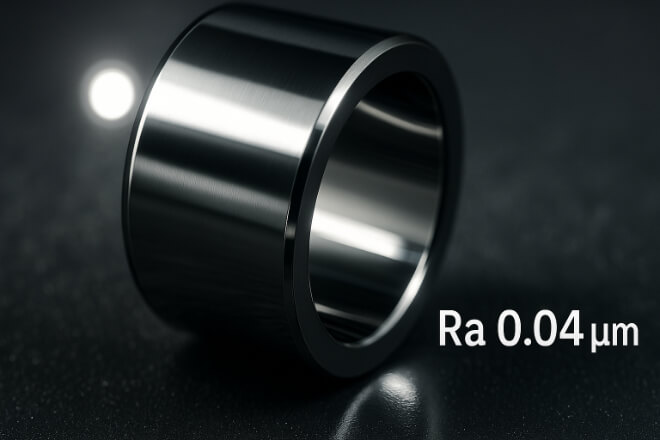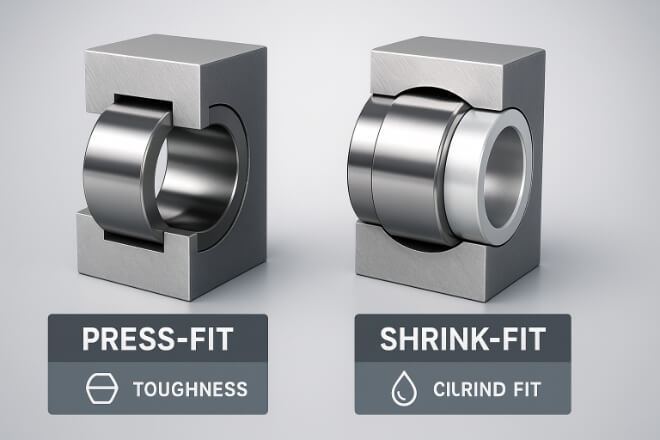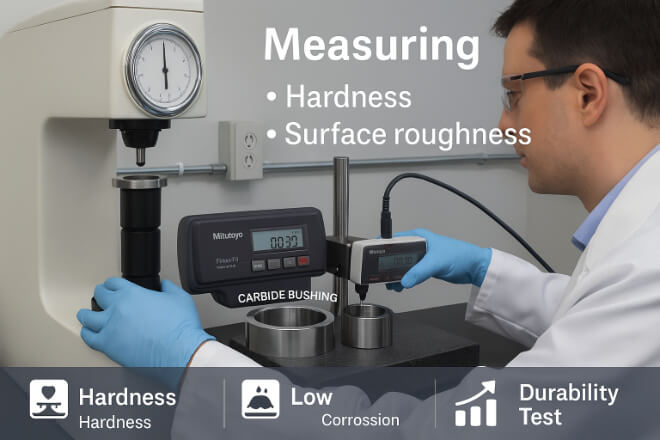اختيار الصحيح tungsten carbide bushing is not just about picking a size or part number.
It’s about making sure the bushing fits your equipment’s load, pressure, temperature, and medium — all while delivering maximum service life and minimal downtime.
Tungsten carbide bushings are used in pumps, compressors, turbines, and rotating equipment where mechanical stress and wear are constant challenges.
The wrong specification can lead to premature wear, shaft damage, or leakage — increasing maintenance costs and downtime.
This guide explains how to select and specify the correct tungsten carbide bushing for your system based on design, material grade, application, and operating environment.
Understand the Function of Tungsten Carbide Bushings

Before choosing a grade or geometry, it’s important to understand why tungsten carbide bushings are used.
They are designed to:
Support and align rotating shafts
Reduce friction between moving parts
Withstand high loads and pressures
Resist corrosion, wear, and deformation
Operate in fluids such as water, oil, gas, or chemicals
Because tungsten carbide combines ceramic hardness with metallic صلابة, it offers much longer life compared to bronze or stainless steel.
Step 1: Define Operating Conditions
The first step in specifying a tungsten carbide bushing is to define the operating conditions. These parameters determine the grade, binder content, and surface finish.
| المعلمة | Typical Range / Value | لماذا هذا مهم |
|---|---|---|
| Pressure | Up to 100 MPa | Determines required compressive strength |
| Temperature | -200°C to +600°C | Affects binder selection and dimensional stability |
| Fluid Medium | Water, oil, gas, chemical, slurry | Controls corrosion and erosion requirements |
| Load Type | Radial or axial | Impacts geometry and wall thickness |
| سرعة | Up to 30 m/s | Defines lubrication and heat dissipation needs |
The more accurately you define these parameters, the easier it becomes to choose the correct tungsten carbide grade and design.
Step 2: Choose the Correct Grade
Tungsten carbide bushings come in several grades, each designed for a specific combination of صلابة, صلابة، و مقاومة التآكل.
| درجة | نوع المجلد | الصلابة (HRA) | Best Suited For |
|---|---|---|---|
| واي جي 6 | الكوبالت | 91 | High wear, low shock applications (water pumps, dies) |
| واي جي 8 | الكوبالت | 89 | General-purpose industrial bushings |
| YG11 | الكوبالت | 87 | Heavy-duty oil, gas, and drilling applications |
| YN6 | النيكل | 90 | Corrosive media — seawater, acids, or chemicals |
Cobalt-bonded grades (YG series): High strength, great for mechanical impact.
Nickel-bonded grades (YN series): Excellent corrosion resistance for chemical and marine systems.
Step 3: Determine Dimensional Requirements
Bushings must fit precisely into housings and onto shafts.
When specifying, confirm inner diameter (ID), outer diameter (OD), length, and tolerance level.
| المعلمة | Typical Range | Tolerance Level |
|---|---|---|
| Inner Diameter (ID) | 10 mm – 300 mm | ±0.01 ملم |
| Outer Diameter (OD) | 20 mm – 500 mm | ±0.02 mm |
| طول | 10 mm – 300 mm | ±0.05 ملم |
For high-speed or precision applications, ground and lapped tolerances are essential to maintain alignment and reduce vibration.
Step 4: Consider the Working Medium
The fluid or gas that passes through your system has a big impact on bushing selection.
| Working Medium | Recommended Material | Notes |
|---|---|---|
| Clean Water | واي جي 6 | Economical and high hardness |
| Seawater | YN6 | Nickel binder for corrosion resistance |
| Light Oil | واي جي 8 | Balanced toughness and hardness |
| Chemical Fluids | YN9 | Chemical stability and low reactivity |
| Slurry | YG11 | High toughness for abrasive particles |
Step 5: Verify Surface Finish and Flatness

For seals or rotating bushings, surface finish is crucial. A polished finish (Ra ≤ 0.05 µm) minimizes friction and wear.
Some high-performance bushings also include micro-pockets or grooves to retain lubrication, improving service life in low-lubrication environments.
Step 6: Specify Tolerances and Mounting Method

Bushings can be mounted in different ways depending on operating temperature and pressure:
Press fit: Common for fixed sleeves.
Shrink fit: Ideal for thermal expansion control.
Adhesive bonding: For low-temperature or non-metallic housings.
Each mounting type may affect final tolerances, so these should be specified clearly on engineering drawings.
Step 7: Confirm Testing and Quality Standards

When ordering tungsten carbide bushings, always check the supplier’s testing certifications and manufacturing standards.
تشمل الاختبارات الشائعة ما يلي:
صلابة (HRA or HV)
Surface finish (Ra measurement)
التسامح البعدي verification
مقاومة التآكل (acid or salt spray test)
These ensure consistent performance across all batches.
خاتمة
Specifying the right tungsten carbide bushing goes beyond material choice — it’s about understanding your system’s load, environment, and geometry.
A properly selected bushing offers:
Longer service life
Less maintenance
Better energy efficiency
Lower lifecycle cost
By defining conditions, choosing the right grade, and confirming dimensions and surface finish.
You can make sure your tungsten carbide bushings perform reliably under any environment — from high-speed compressors to corrosive chemical pumps.
إذا كنت تريد معرفة المزيد من التفاصيل حول أي شركة، فلا تتردد في اتصل بنا.
